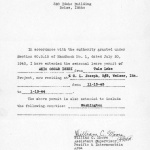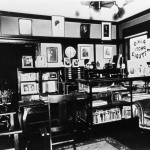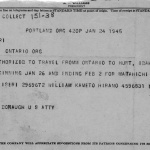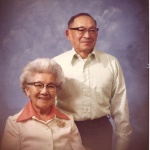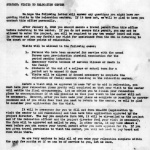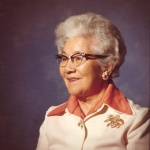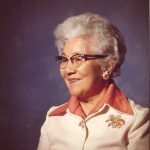Hikaru Iwasaki
| Name | Hikaru Iwasaki |
|---|---|
| Born | 1923 |
| Died | 2016 |
| Birth Location | San José, CA |
| Generational Identifier |
WRA Photographic Section photographer. Although he was initially hired as a darkroom specialist, Hikaru Iwasaki (1923–2016) became the only Japanese American to work in the War Relocation Authority's Photographic Section (WRAPS) as a full-time staff photographer. Although he focused on a wide range of subjects, Iwasaki is perhaps most notable for his many portraits of "the Salvage"—that is, Japanese Americans who left the camps before the war was over. [1]
Biographical Overview
Hikaru Iwasaki is a second generation Japanese Americans ( Nisei ) who was born in San José, California, in 1923. Introduced to photography as a middle school student, this new-found hobby soon became his passion if not an obsession. Constantly trying to hone his skills during his high school years in San José, Iwasaki shot photos for his high school newspaper and yearbook. He also found a part time job work at Karl Leiter's San José photo studio, which gave him some exposure to the profession including the importance of light and lighting, and darkroom experience including mixing chemicals in order to develop portrait negatives.
After Executive Order 9066 was implemented, the Iwasaki family was forced to move to a temporary Wartime Civil Control Administration detention center located at the Santa Anita Race Track just east of Los Angeles. After a short stay there, the family was forced to move again to the War Relocation Authority (WRA) camp in Wyoming known as Heart Mountain . Not allowed to bring in a camera, Iwasaki took a part time job in the camp hospital. Eventually he was trained and worked as a technician taking x-rays for the camp doctors.
At the age of 19, Iwasaki was recruited to WRAPS as a darkroom technician in July 1943 after Francis Stewart resigned, and Charles E. Mace moved from his darkroom assignment to become the second full-time photographer. As demand for photographs increased, however, Iwasaki quickly became the third full-time WRAPS photographer, a role he held between 1944 and 1945. In his place, Takashi "Bud" Aoyama —another Nisei hired out of the Heart Mountain camp—was assigned to WRAPS darkroom (i.e., developing and printing) duties.
Because resettlement was the WRA's primary mission from 1944 on, it is not surprising that many of Iwasaki's photographs are portraits of Japanese American resettlers living in all regions of the U.S. east of the restricted military zones . Because Iwasaki himself believed that the WRA camps were an unhealthy and demoralizing environment, he explained that he wanted his resettlement photos to be uplifting, and hoped that seeing them encouraged those who were still in camp after the end of 1943 to put their best foot forward and go back into the larger society even while the war was still in progress. Importantly, Iwasaki has noted in a number of published interviews that even though he was guided to certain families and individuals by the WRA field staff in charge of local resettlement programs, no one told him what photos to take or how to take them.
Iwasaki thus chose his own shots, and during the course of his WRAPS tenure he reported that no one ever refused his request to be photographed. Concomitantly, to his knowledge, and unlike Dorothea Lange , his images were never censored by the WRA or by the U.S. Army. Because he is the only living full-time member of WRAPS, Iwasaki's comments are of critical importance if only because many commentators have characterized the WRAPS photos as being "propaganda" without considering the context in which they were shot, both historical as well as in terms of the cameras, film, and lighting equipment in use during the 1940s—the combination of which resulted a somewhat "staged" look.
Iwasaki stayed with WRAPS until it was closed at the end of 1945. He remained based in Denver and went on to have a varied and successful post-war career primarily with mainstream print media. One of his most significant shoots, concerning civil rights issues after the war, for example, revolved around exclusive photos for a LIFE magazine feature on Brown v. Board of Education : Iwasaki's photos depict Linda Brown and her sister as they crossed the railroad tracks on their way to a segregated school for African Americans that was further from the Brown's home than the neighborhood school that was for "Whites Only." Iwasaki worked for many years, both as a freelance photographer for various newspapers and media outlets, and was also hired by nationally-distributed magazines like Time , LIFE (on contract) Sports Illustrated (on staff), and People (on assignment) before he retired.
Impact of His Photography
Given that he was only 19 years old when he was hired, and that he has more than one thousand photographs on the Japanese American Relocation Digital Archive site, it is notable that only Thomas "Tom" Parker shot more images for WRAPS during this period. Parker, of course, was very senior to Iwasaki, both in terms of age and of experience. Iwasaki's online corpus indicates that he was an open-ended documentarian: his shots cover all sorts of foci from portraits of resettlers, to wounded veterans, to camp art, to photo essays such as his shots having to do with closing of the Arkansas WRA camp, Jerome , in 1944.
When contacted by Lane Hirabayashi in 2006 for an interview about his WRAPS work Iwasaki had very clear memories of his job, workplace, and colleagues, and was willing and able to give extensive commentaries on camera film, and flash equipment, darkroom methods, how shoots were set up, the philosophy of shoots that the WRAPS photographers generally adhered to, and many other topics which cannot be reconstructed from the WRA's archival holdings alone.
In sum, Hikaru Iwasaki agreed very much with the broad WRA mission, 1943 through 1945: that is, that since life in the camps was insalubrious at many different levels and, if people had any aspirations to leave, get a job, and go back out into the larger society to start their lives over, that they should by all means do so. Perhaps because of this, his photographs are optimistic and show the happier, more positive side of the lives of "the Salvage"—that is, Japanese Americans who faced many challenges in returning to the larger society while the war was still in progress.
For More Information
Hirabayashi, Lane Ryo, with Kenichiro Shimada. Japanese American Resettlement Through the Lens: Hikaru Carl Iwasaki and the WRA's Photographic Section, 1943–1945 . Photographs by Hikaru Carl Iwasaki. Foreword by Norman Y. Mineta. Boulder: University Press of Colorado, 2009.
Japanese American Relocation Digital Archives (JARDA). http://www.calisphere.universityofcalifornia.edu/jarda/ .
LIFE magazine photograph by Carl Iwasaki of the Brown Sisters, Brown v. Board of Education , Monroe Gallery of Photography. http://monroegallery.blogspot.com/2011/05/may-17-1954-brown-vs-board-of-education.html .
Footnotes
- ↑ This entry is based on the official WRA employment records of Hikaru Iwasaki. I am also very grateful to Mr. Iwasaki for repeated interviews and comments that he has shared with me since our first conversations in 2006.
Last updated Sept. 26, 2017, 2:30 a.m..

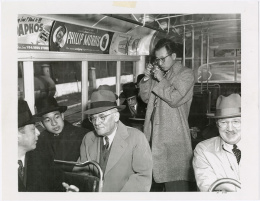 Media
Media
